World Cup Group Stage Best XI: Top performers in Brazil by position
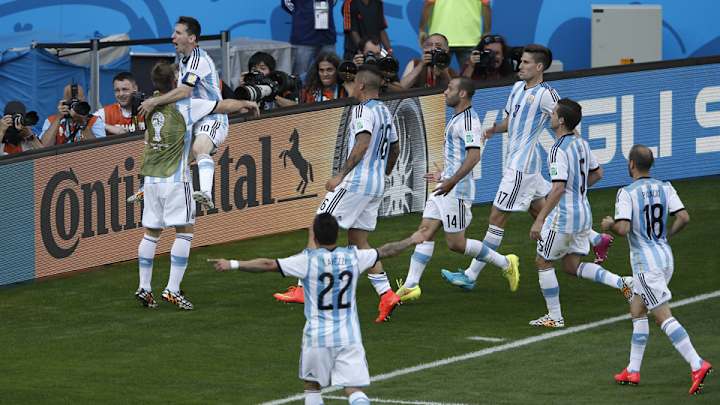
The World Cup's group stage yielded not only some tremendous team performances, but top individual showings as well. Amid the record-setting number of goals there were heroic, dominant games and moments of brilliance, some of which lifted nations to the next stage and have allowed their fans to dream big.
This is a team of the tournament so far. It's not a list of the top 11 players, or the players who've scored the most goals; it's an attempt to put together a side that could actually play together based on the form players have shown so far. The most striking omission, perhaps, is Neymar, who has scored four goals and just about lived up to the huge pressure he is under to carry host nation Brazil, and if Arjen Robben and Lionel Messi hadn't had such outstanding starts to the World Cup, he would have made the cut.
Perhaps a holding player could have been left out and a 4-1-4-1 adopted, but trying to pack that much attacking talent into the side risks the top-heaviness suffered by Argentina under Diego Maradona at the last World Cup - and, besides, the whole point of picking a team such as this is to try to give recognition to players in less glamorous positions.
Here are the top group stage performers by position:
GOALKEEPER: Guillermo Ochoa, Mexico
The Mexico goalkeeper's contract at Ajaccio expired at the end of last season, but you suspect he won't be without a club for long after his heroics against Brazil, when he made a series of fine blocks, the most eye-catching of which was his full-length dive to his right to claw away a Neymar header. Nigeria's Vincent Enyeama can probably feel slightly unfortunate to have missed out.
RIGHT BACK: Serge Aurier, Ivory Coast
In a disappointing campaign for Ivory Coast the one saving grace was the right back, Aurier. Only 21, he proved himself good in the air, averaged 2.7 tackles per game and got forward to set up both Ivorian goals against Japan. If only he'd been born a decade earlier to peak with the nation's golden generation.
CENTER BACK: Kenneth Omeruo, Nigeria
Omeruo, just 20, was a star of Nigeria's Cup of Nations campaign in South Africa last year, and he has continued his form at this tournament despite the injury to his regular partner Godfrey Oboabona. The Middlesbrough defender made 3.7 tackles per game and won 2.3 aerial duels, showing a fine understanding of when to attack the ball and when to hold his position.
CENTER BACK: Rafael Marquez, Mexico
Mexico for several years has played a style based on Marquez. He isn't really a center back or a central midfielder, being both simultaneously. Sometimes he steps up and Mexico haa a back four, sometimes he drops back and it has a back three with the fullbacks liberated. His performance against Brazil in particular was a masterclass in reading the game.
LEFT BACK: Daley Blind, Netherlands
According to whoscored.com, no fullback has made as many tackles as the 5.3 per game managed by Blind, who, operating at left wingback, has also got forward to contribute three assists. In the Netherlands' last-minute change of shape, Blind was somebody who had to alter his position; it's a sign of his intelligence as a player that he's done it so smoothly.
DEFENSIVE MIDFIELD: Marcelo Diaz, Chile
Chile has impressed with the intensity and organization of its pressing, its style very much based on the unit rather than individuals. Diaz, though, still stood out with his energy, his tackles and his capacity to see the quick forward pass. As he showed at Universidad to Chile before his move to Basel, Diaz is the perfect midfielder for Jorge Sampaoli's style of play.
DEFENSIVE MIDFIELD: Jermaine Jones, USA
There is a rumbling aggression about the US midfield - an attitude that Kyle Beckerman has at times taken too far - its energy unsettling more established sides. Jones has been key to that and has largely stayed on the right side of acceptability as well as weighing in with a superb goal against Portugal and an assist.
World Cup Group Stage Best XI
GOALKEEPER: Guillermo Ochoa, Mexico
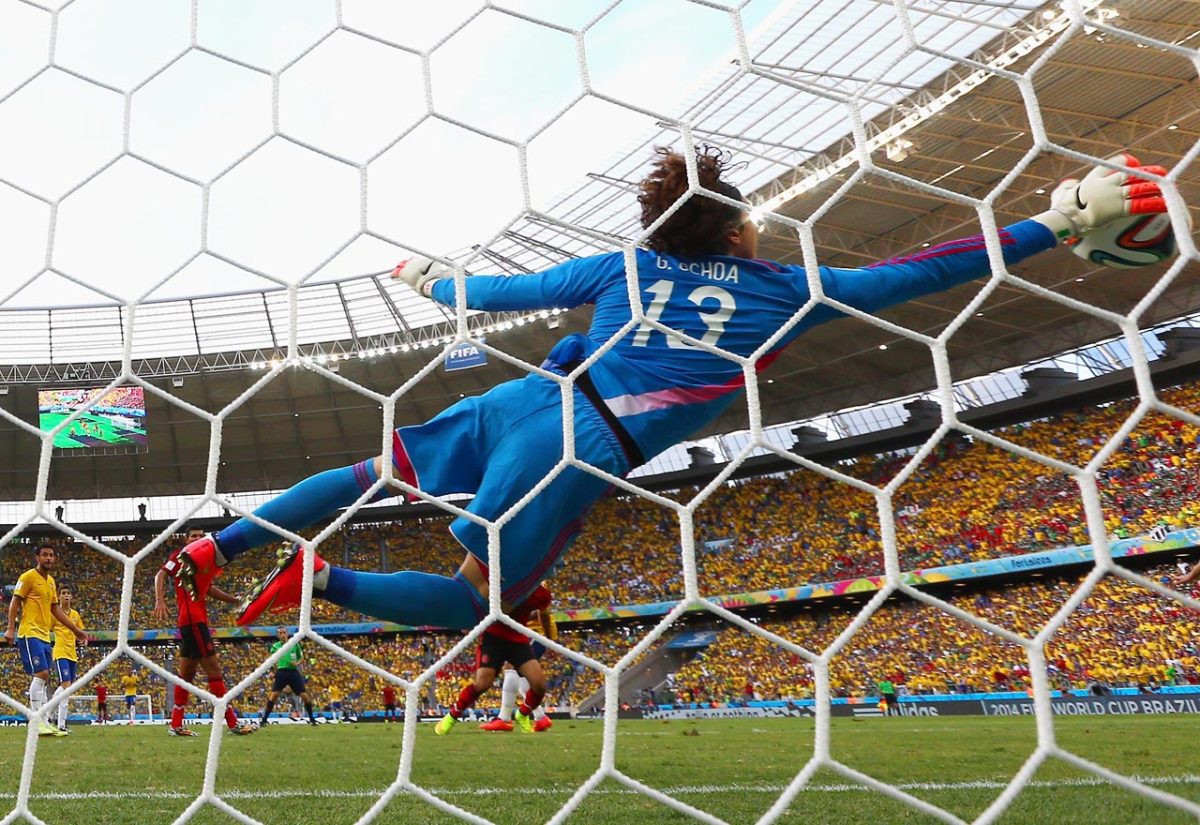
The Mexico goalkeeper's contract at Ajaccio expired at the end of last season, but you suspect he won't be without a club for long after his heroics against Brazil, when he made a series of fine blocks, the most eye-catching of which was his full-length dive to his right to claw away a Neymar header. Nigeria's Vincent Enyeama can probably feel slightly unfortunate to have missed out.
RIGHT BACK: Serge Aurier, Ivory Coast

In a disappointing campaign for Ivory Coast the one saving grace was the right back, Aurier. Only 21, he proved himself good in the air, averaged 2.7 tackles per game and got forward to set up both Ivorian goals against Japan. If only he'd been born a decade earlier to peak with the nation's golden generation.
CENTER BACK: Kenneth Omeruo, Nigeria
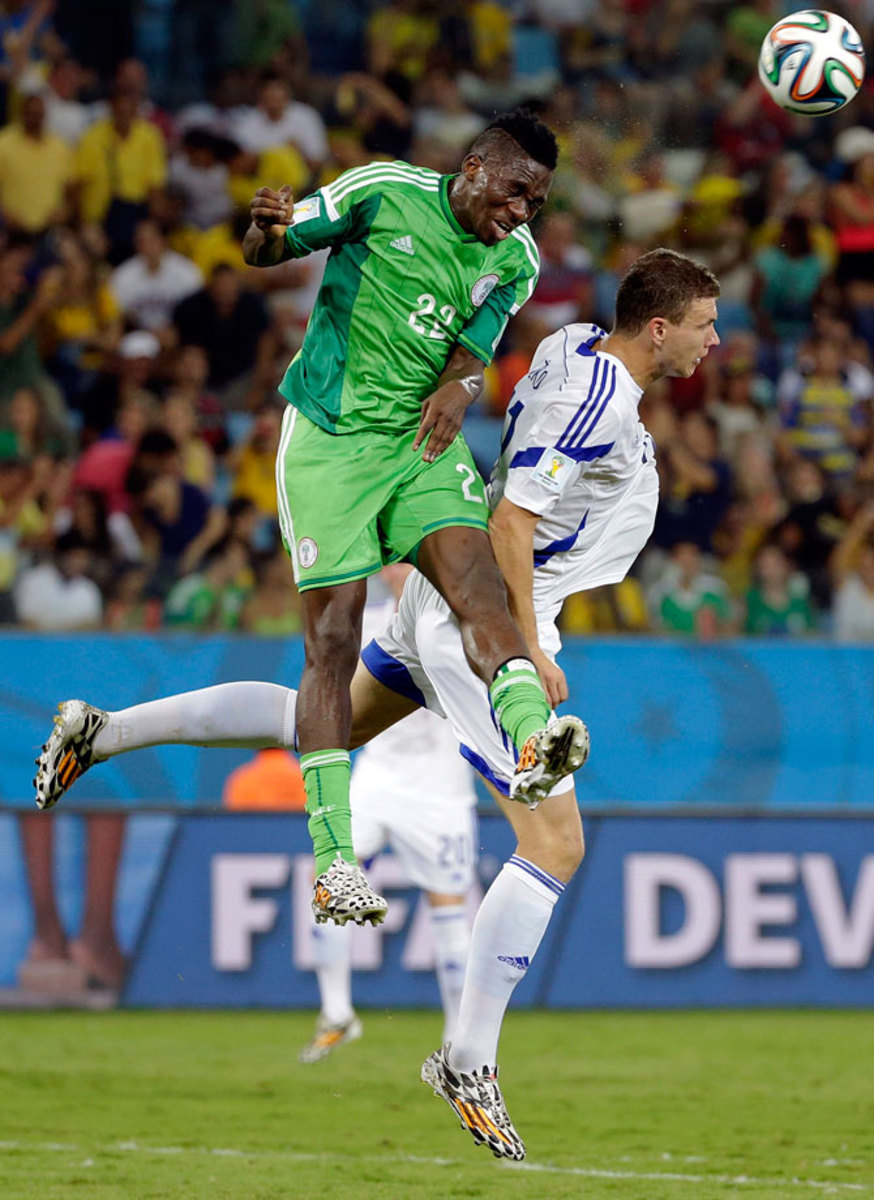
Omeruo, just 20, was a star of Nigeria's Cup of Nations campaign in South Africa last year, and he has continued his form at this tournament despite the injury to his regular partner Godfrey Oboabona. The Middlesbrough defender made 3.7 tackles per game and won 2.3 aerial duels, showing a fine understanding of when to attack the ball and when to hold his position.
CENTER BACK: Rafael Marquez, Mexico
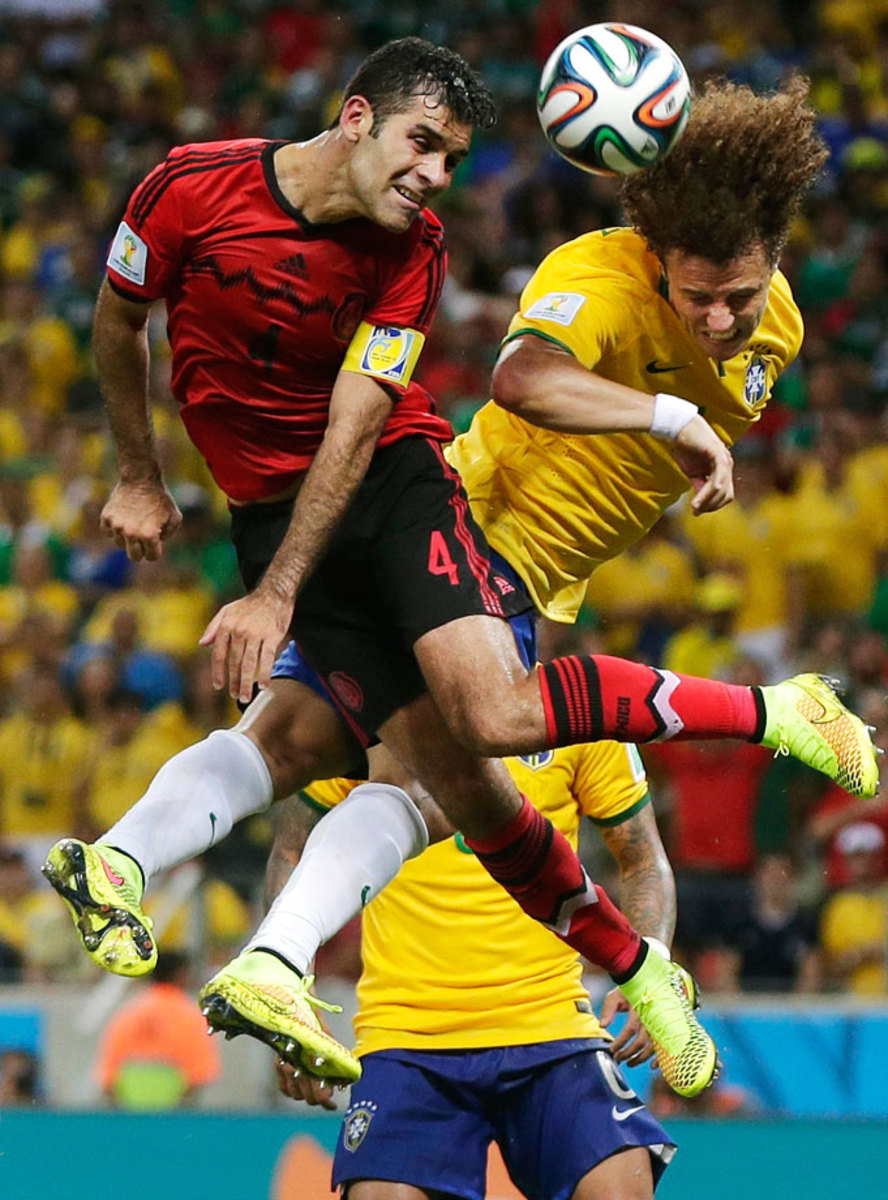
Mexico for several years has played a style based on Marquez. He isn't really a center back or a central midfielder, being both simultaneously. Sometimes he steps up and Mexico haa a back four, sometimes he drops back and it has a back three with the fullbacks liberated. His performance against Brazil in particular was a masterclass in reading the game.
LEFT BACK: Daley Blind, Netherlands
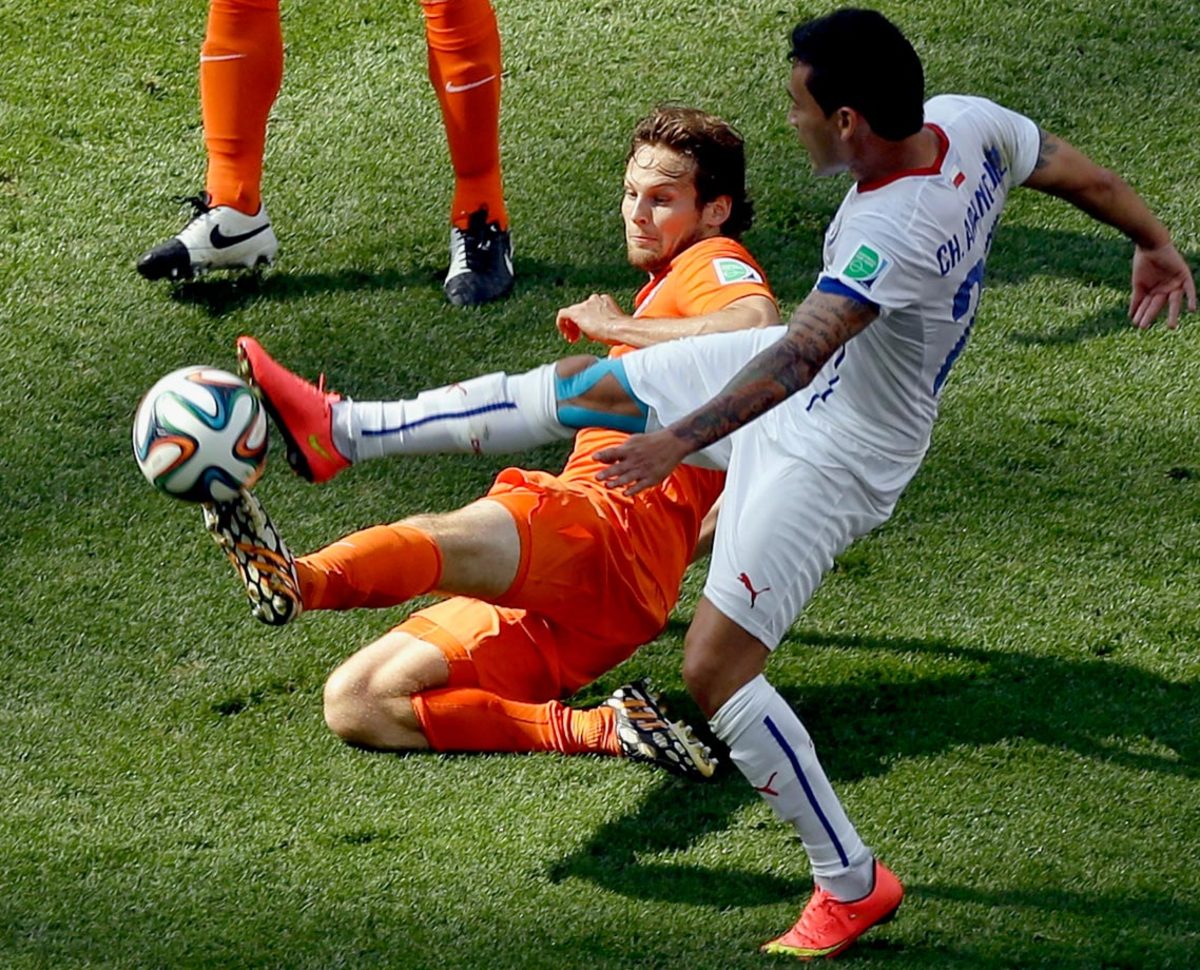
According to whoscored.com, no fullback has made as many tackles as the 5.3 per game managed by Blind, who, operating at left wingback, has also got forward to contribute three assists. In the Netherlands' last-minute change of shape, Blind was somebody who had to alter his position; it's a sign of his intelligence as a player that he's done it so smoothly.
DEFENSIVE MIDFIELD: Marcelo Diaz, Chile
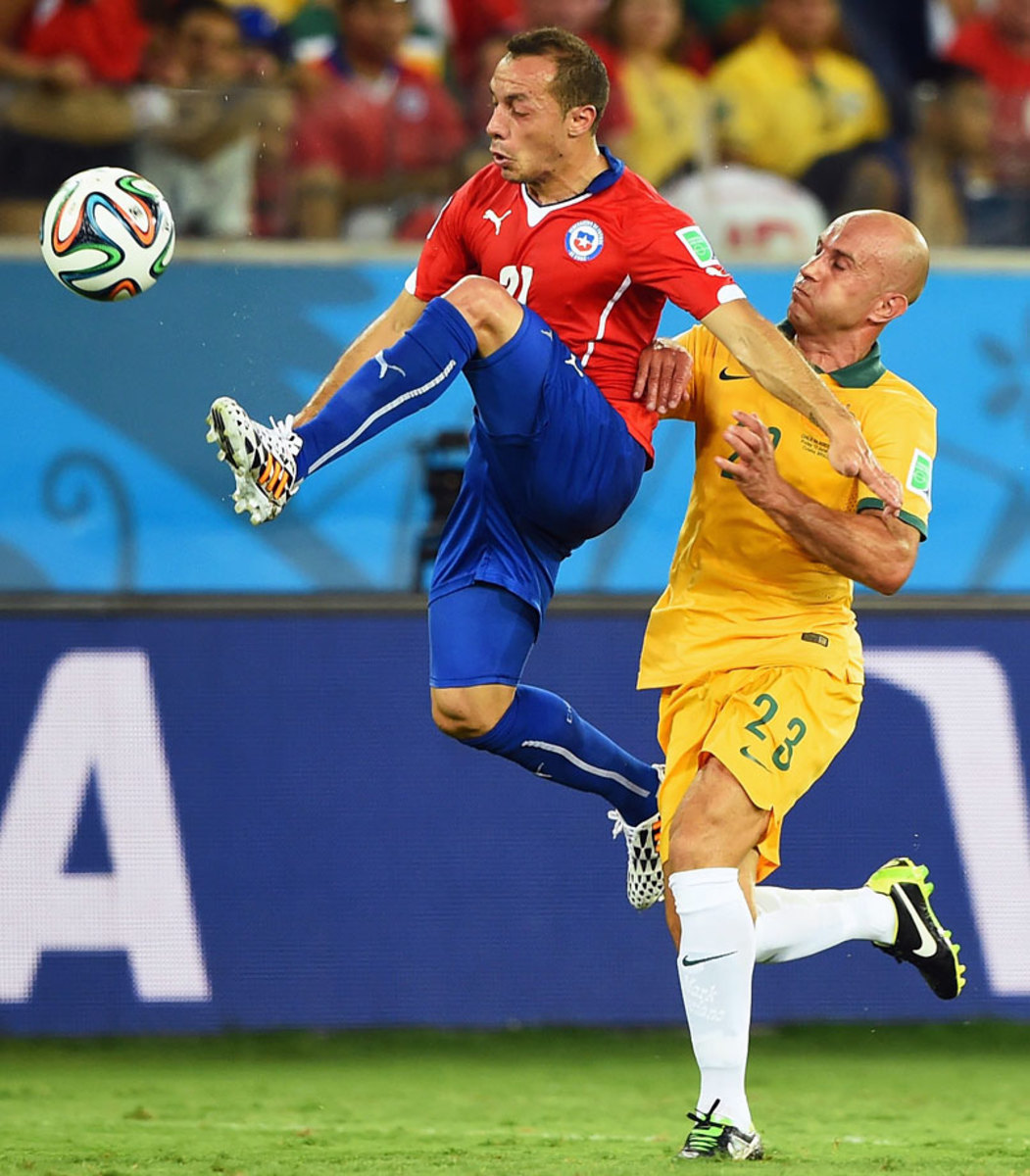
Chile has impressed with the intensity and organization of its pressing, its style very much based on the unit rather than individuals. Diaz, though, still stood out with his energy, his tackles and his capacity to see the quick forward pass. As he showed at Universidad to Chile before his move to Basel, Diaz is the perfect midfielder for Jorge Sampaoli's style of play.
DEFENSIVE MIDFIELD: Jermaine Jones, USA
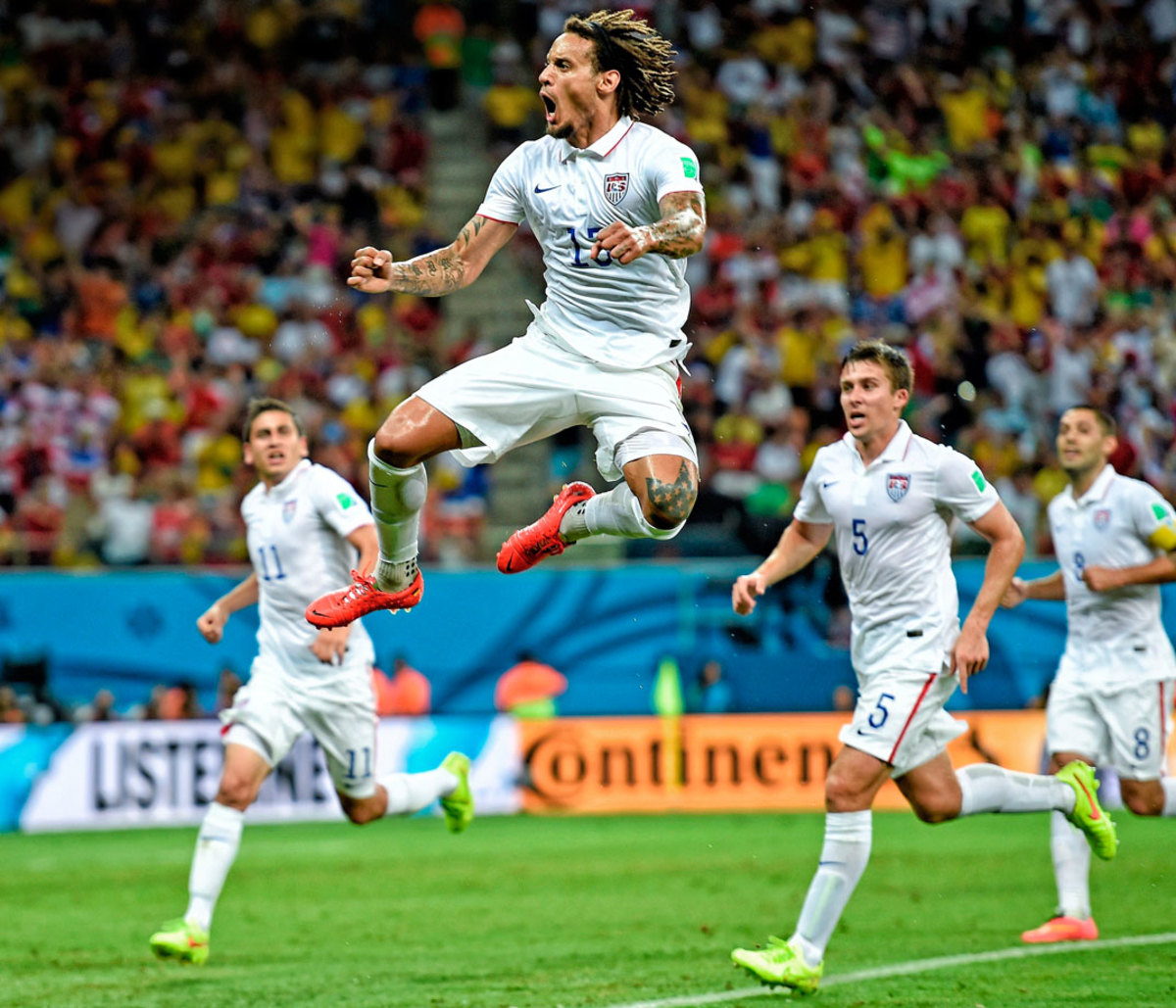
There is a rumbling aggression about the US midfield - an attitude that Kyle Beckerman has at times taken too far - its energy unsettling more established sides. Jones has been key to that and has largely stayed on the right side of acceptability as well as weighing in with a superb goal against Portugal and an assist.
RIGHT MIDFIELD: James Rodriguez, Colombia
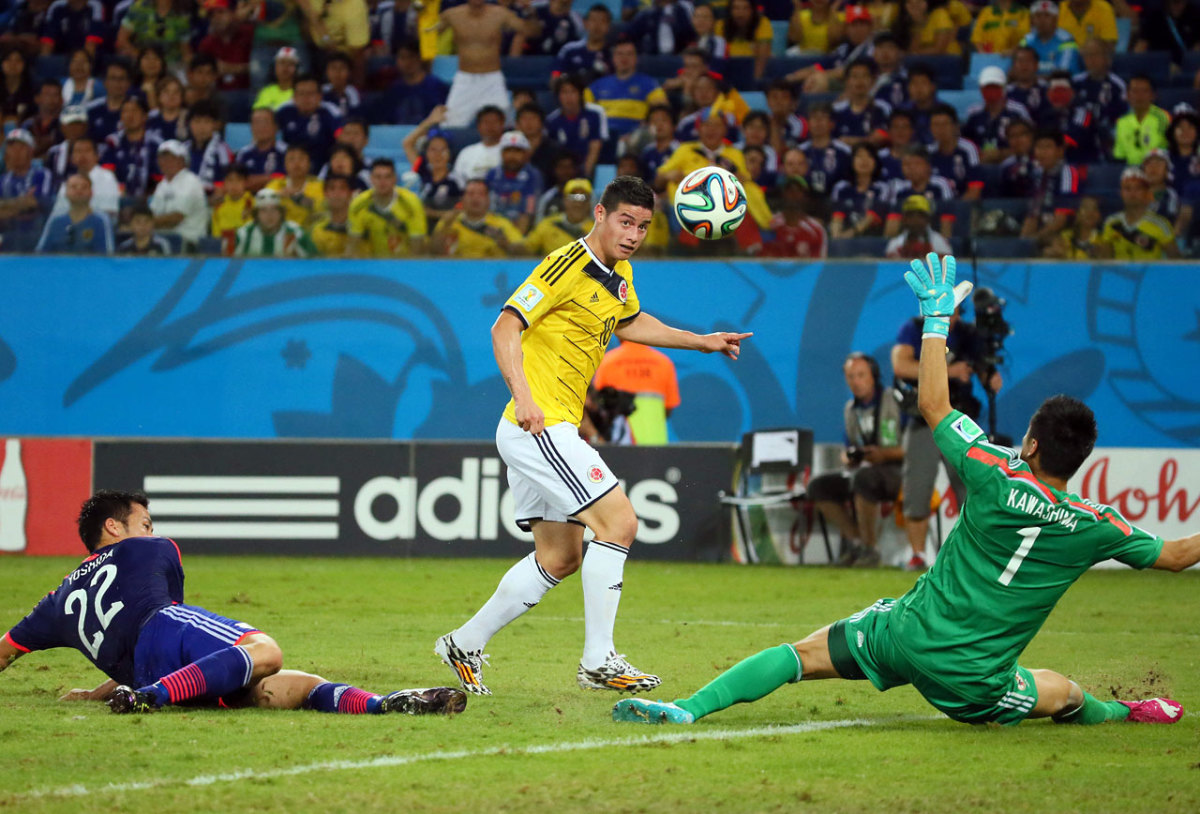
It seems strange to say of a player who cost 45 million Euros, but perhaps no player has broken through at this tournament quite like James. From being a player of immense promise, he now looks the real deal, scoring in all three games and setting up two in the 4-1 win over Japan. His goal in that game, in which he came off the bench, was sublime, a superb run capped by a majestic chip.
CENTRAL MIDFIELD: Lionel Messi, Argentina
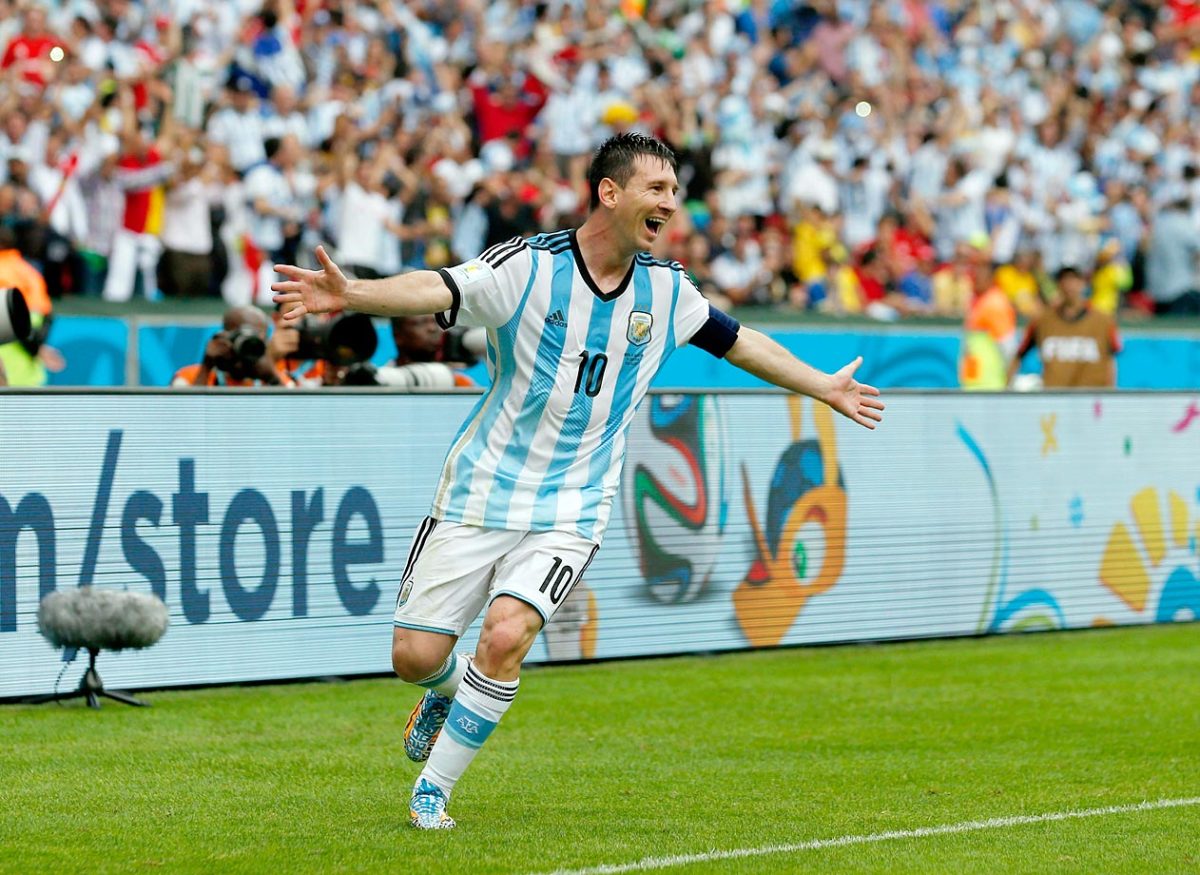
Success can haunt a nation. There are times when it feels there are certain sections of Argentina that cannot fully acclaim Messi until he has done what Diego Maradona did in 1986 and dragged the nation almost single-handedly to glory. At the moment, though, he is doing just that. He scored vital and brilliant goals against both Bosnia-Herzegovina and Iran, and added two more, one of them a stunning free-kick, against Nigeria. Given the pressure he's under, his performances have been stunning.
LEFT MIDFIELD: Arjen Robben, Netherlands

By the time they get to 30, most players have lost their extreme pace, but not Robben. In scoring against Spain, he was measured at running at 37kph, which is sub-10-second pace for the 100 meters. Not only has he not got any slower, but Robben's decision-making has improved with age. He has been admirably clinical not only with his finishing but with his passing, as he showed by leading the break and laying on the second goal against Chile. He just edges out Neymar, the Brazil maestro who is tied with Messi and Thomas Muller for the competition lead in goals with four.
CENTER FORWARD: Karim Benzema, France
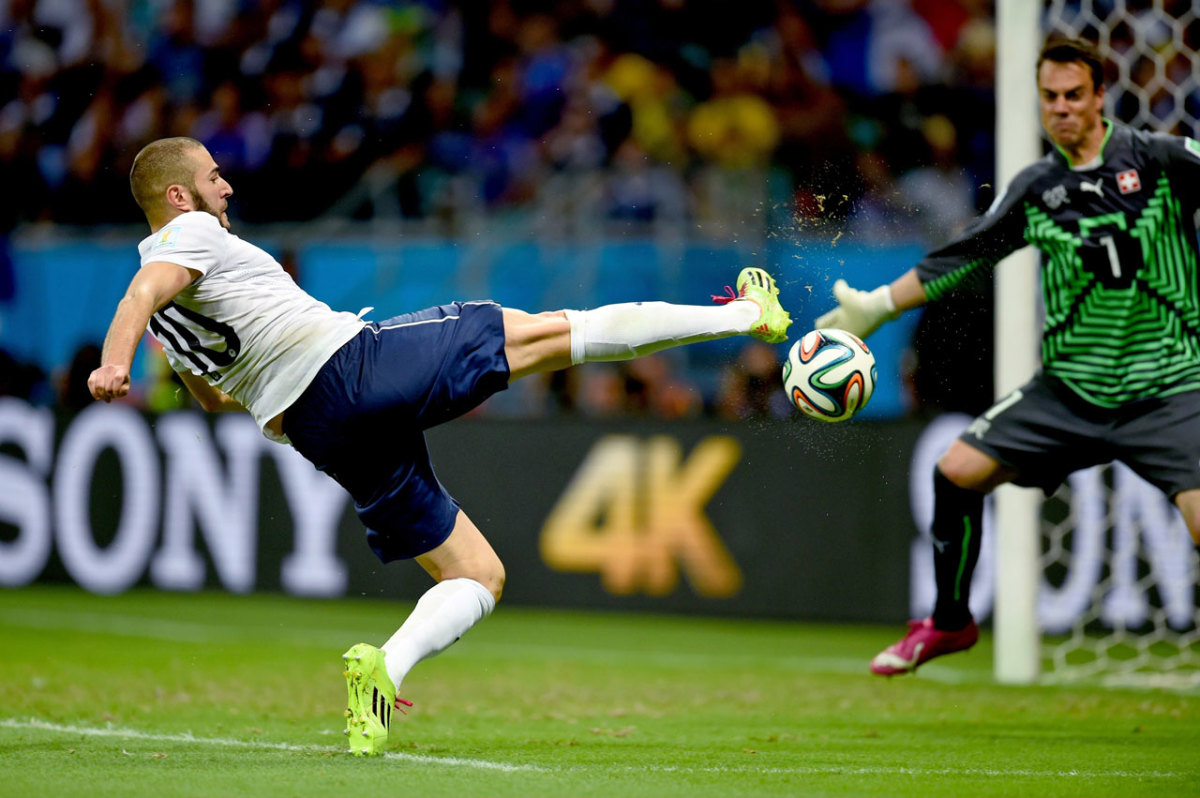
There was an argument for Muller, but Benzema gets the nod for his three goals and two assists, and, in particular, for his all-around play against Switzerland, when he was superb operating from the right, and was denied arguably the goal of the tournament so far by the referee blowing for fulltime just seconds prior. He's quick, he's intelligent, he can hold the ball up and he's in a rich vein of finishing form.
RIGHT MIDFIELD: James Rodriguez, Colombia
It seems strange to say of a player who cost 45 million Euros, but perhaps no player has broken through at this tournament quite like James. From being a player of immense promise, he now looks the real deal, scoring in all three games and setting up two in the 4-1 win over Japan. His goal in that game, in which he came off the bench, was sublime, a superb run capped by a majestic chip.
CENTRAL MIDFIELD: Lionel Messi, Argentina
Success can haunt a nation. There are times when it feels there are certain sections of Argentina that cannot fully acclaim Messi until he has done what Diego Maradona did in 1986 and dragged the nation almost single-handedly to glory. At the moment, though, he is doing just that. He scored vital and brilliant goals against both Bosnia-Herzegovina and Iran, and added two more, one of them a stunning free-kick, against Nigeria. Given the pressure he's under, his performances have been stunning.
LEFT MIDFIELD: Arjen Robben, Netherlands
By the time they get to 30, most players have lost their extreme pace, but not Robben. In scoring against Spain, he was measured at running at 37kph, which is sub-10-second pace for the 100 meters. Not only has he not got any slower, but Robben's decision-making has improved with age. He has been admirably clinical not only with his finishing but with his passing, as he showed by leading the break and laying on the second goal against Chile. He just edges out Neymar, the Brazil maestro who is tied with Messi and Thomas Muller for the competition lead in goals with four.
CENTER FORWARD: Karim Benzema, France
There was an argument for Muller, but Benzema gets the nod for his three goals and two assists, and, in particular, for his all-around play against Switzerland, when he was superb operating from the right, and was denied arguably the goal of the tournament so far by the referee blowing for fulltime just seconds prior. He's quick, he's intelligent, he can hold the ball up and he's in a rich vein of finishing form.
